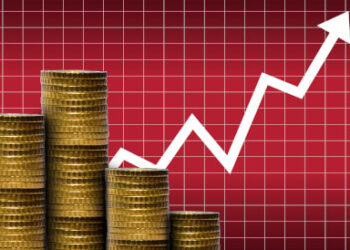Encouraging economic data from the world’s largest economy and the anticipation of its first rate cut in four years have driven a Wall Street rally, with the ASX also experiencing strong gains.
US stocks surged on Friday due to expectations of monetary easing, with the S&P 500 climbing to 5,626 by market close.
Fuelled by positive momentum, the Australian share market surged to 8,144.7 before noon on Monday, inching closer to its highest intra-day level of 8,148.7 reached on 1 August.
Seven of the 11 sectors were showing gains, with financials and tech stocks leading the charge. However, the rally appeared to plateau, and the ASX closed at 8,121.60 on 16 September.
Speaking to InvestorDaily following the ASX’s strong Monday run, Diana Mousina, deputy chief economist at AMP, said the Australian share market has been buoyed by better-than-expected earnings and market speculation about potential interest rate cuts both at home and in the world’s largest economy.
“The Australian share market has been performing similarly to the US, outperforming actually in the past few weeks, and it has been moving high after the last reporting season and after that volatility dip [in August],” Mousina said.
“Part of it, I think, is definitely to do with interest rates cut expectations. The market is pricing in a cut from the Reserve Bank for the end of this year despite the fact the Reserve Bank’s not even talking about doing any interest rate cut – they’ve been pushing back on market pricing for rate cuts, especially by the end of this year.
“So it’s probably a bit of a better earnings season than what was feared, pricing for interest rate cuts, and what’s going on in the US.”
The US Fed is expected to cut rates by 50 basis points when it meets this week on 17–18 September. It will be the US central bank’s first meeting since the Jackson Hole Symposium in August, where chair Jerome Powell signalled that “the time has come” for monetary policy easing.
While markets are pricing in a 50 basis point cut, Mousina believes a 25-point cut is more likely, given the larger macroeconomic picture. In fact, Mousina believes that a 50 basis point interest rate cut could risk reigniting inflation by boosting consumer spending and demand, which might lead to higher prices.
At home, however, the jury is still out on when the RBA will commence an easing cycle, although markets do anticipate it will be this year.
Given Australia’s still intricate economic situation, especially following the recent troubling GDP print, Mousina urged maintaining perspective on where the market is expected to go next.
“The Australian share market is up by about 7 per cent in the year to date whereas the US share market is a lot stronger than that. It’s up by 18 per cent year to date, so we’re talking about more than double the performance,” she said.
“So yes, it could be a record high for Australia, but you need to keep things in context as well in terms of how well it’s performed and how the underlying economy is performing.”







